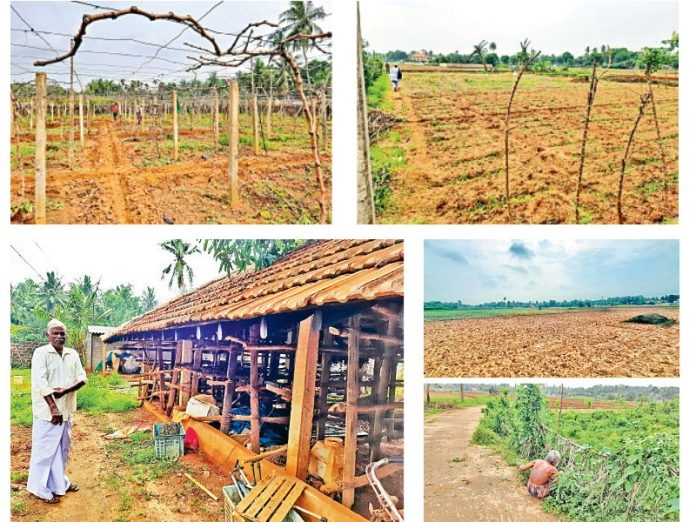Jaffna Vegetable Farmers in Distress

“Every crop grown in this land has gone through a pledge of trust in God, rather than in any human authority. The government’s actions have caused all of the problems, but we must find solutions. When the government speaks about agriculture, it sees and feels only for the harvesters of rice. We are getting stepmotherly treatment. We simply want to know if rice can be eaten without vegetables. We are wondering what we should do to draw the kind attention of the government to our pressing problems,” P. Ranganathan, 60, laments as he shows his onion farm in Chunnakam, Jaffna.
He is one of 35,000 families in Jaffna who rely on agriculture. Their main crop is paddy, but they also grow tobacco, potatoes, chillies and onions. In addition, some families cultivate carrots, cabbage and beets.
Since, the then President Gotabaya Rajapaksa abruptly banned chemical fertilisers and pesticides in favour of organic farming in April 2021, their way of life has been drastically altered. While much emphasis has been placed on the issue of fertiliser for rice farmers, those who grow vegetables believe they have been overlooked and discriminated against.
According to vegetable farmers, while they are paying higher prices for feed and pesticides, paddy farmers are receiving subsidised or sometimes even free fertiliser.
‘It is debatable whether people in Sri Lanka can eat rice without vegetables”, says Kandaiyah Thiyagalingam, President of Federations Farmers Union in Jaffna.
Secretary to the Ministry of Agriculture Gunadasa Samarasinghe disclosed that the government has taken steps to provide urea fertiliser at Rs 10,000 for a 50 kg sack. He claims that the same sack of fertiliser for vegetable farmers costs
Rs 15,000. Contrary to this statement, Thiyagalingam claimed that in Jaffna, urea fertiliser costs between Rs 15,000 and Rs 50,000 for vegetable farmers.
Another hardworking labourer, 60-year-old Dharmaraja, who is currently growing brinjals on a half-acre plot in Chunnakum, bemoaned the fact that they had to use less fertiliser than they needed due to scarcity and price. He claimed that to get a good yield, he needed to buy urea fertiliser on three occasions within two months and that he pays
Rs 20,000 for a 50 kg sack.
In addition, in terms of pesticides, he says that he must purchase a 50 ml bottle of pesticide known as ‘chappiyan’ for Rs 5,000 or Rs. 6,000. He claims he needs at least 50 bottles to use on the crop to minimise pests.
When asked if the vegetables he harvests from the farm are sold at the Jaffna market, Dharmaraja replied that he sends the harvest of vegetables to the Dambulla Economic Centre. Transporting these vegetables to Dambulla is a difficulty they are currently facing, he added.
